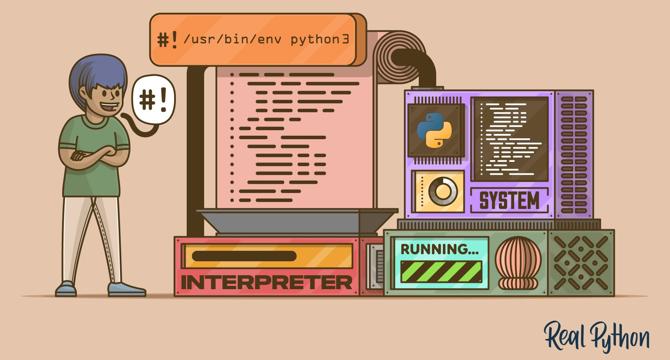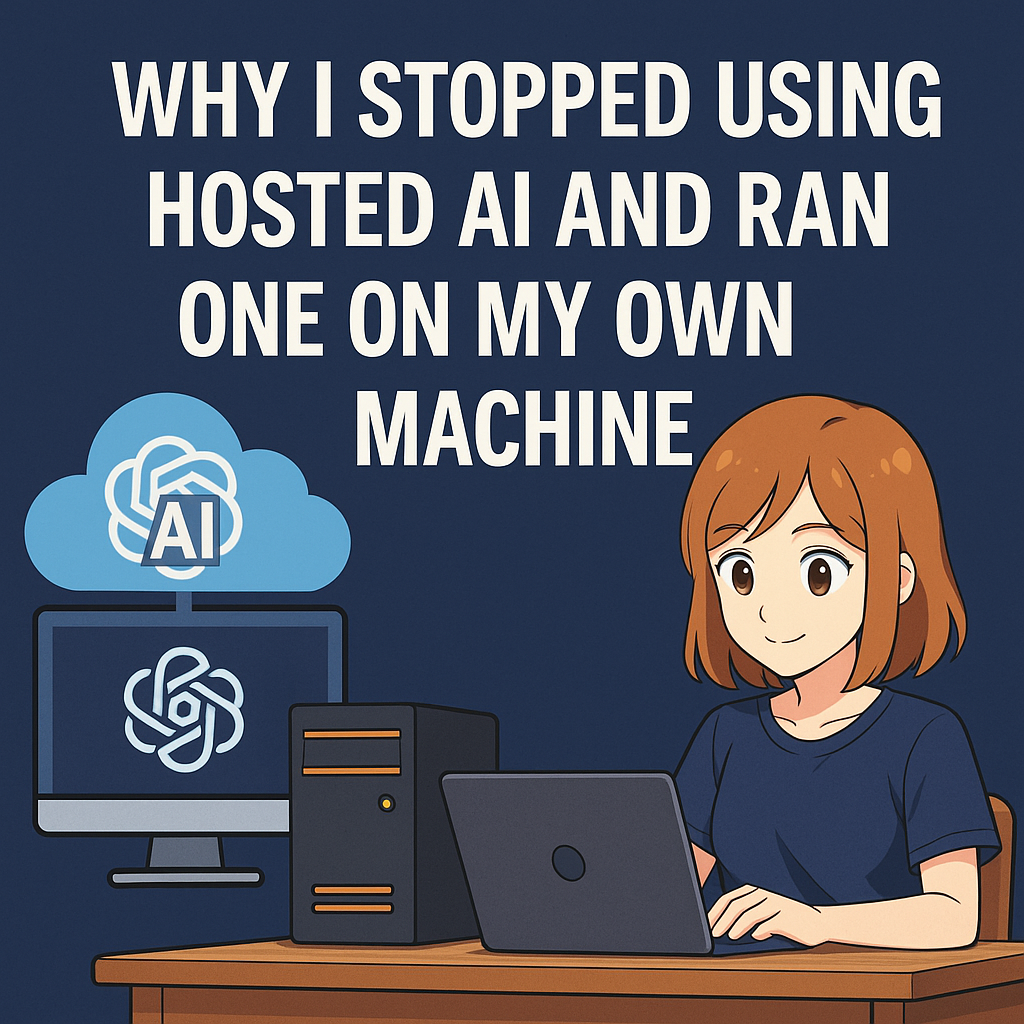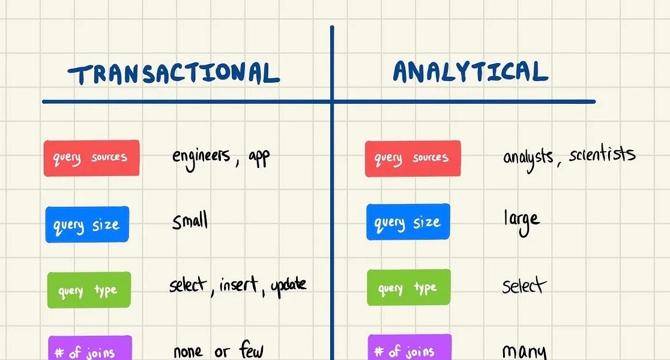Programming News
PlanetPython
137

Image Credit: PlanetPython
Mirek D��ugosz: Interesting bugs: Artifact building failure caused by GitHub API rate��limits
- A memorable bug encountered at work involved GitHub API rate limits causing artifact building failure in a Jenkins pipeline.
- The bug surfaced issues not visible in local development and showcased the value of broad knowledge in troubleshooting.
- The pipeline step aimed to build a container image from code versions with proposed changes in a standard web app architecture setup.
- GitHub API requests for extracting the newest frontend version led to HTTP status 429 errors due to rate limits, despite small team activity.
- Investigation revealed different rate limits for authenticated users, prompting a hypothesis on shared IP addresses in the company.
- Updating API requests with authentication tokens increased the rate limit from 60 to 5000 per hour, resolving the rate limit issue.
- Challenges in passing the token through multiple layers in the container build environment led to implementing secret mounting for security.
- This solution ensured pipeline success without API rate limit errors, providing a correct resolution to the artifact building problem.
Read Full Article
8 Likes
Logrocket
168

Image Credit: Logrocket
Using CSS breakpoints for fluid, future-proof layouts
- CSS breakpoints are crucial for creating responsive web layouts that adjust dynamically to different screen sizes based on viewport widths.
- Modern breakpoints focus on content-driven thresholds rather than fixed device widths, emphasizing fluid layouts and new CSS features like container queries for future-proof designs.
- Responsive design, introduced by Ethan Marcotte, uses fluid grids and media queries to adapt styles based on viewport characteristics, replacing the need for separate desktop and mobile versions of websites.
- Breakpoints are specific viewport widths at which a site's layout shifts, with common ones like 768px distinguishing tablet from desktop layouts.
- Modern CSS tools like Flexbox and Grid support responsiveness, while newer features like clamp() and container queries offer more dynamic control over layouts.
- Choosing breakpoints involves considering either device-based breakpoints or content-based breakpoints that adapt the design where content adjustment is needed.
- Popular CSS frameworks like Bootstrap and Tailwind have default breakpoints for different screen sizes, offering predefined classes for creating responsive layouts.
- Best practices for creating CSS breakpoints include starting with a mobile-first approach, avoiding awkward breakpoint ranges, and wisely using media and container queries.
- Testing responsive breakpoints can be done using browser tools like Chrome DevTools or cloud-based testing tools to ensure consistent design across devices.
- Emerging techniques like fluid design and tools like Utopia promote proportional and fluid scaling without the need for fixed breakpoints, enhancing adaptability and design consistency.
Read Full Article
10 Likes
Logrocket
417

Image Credit: Logrocket
How to use Relume AI to design wireframes fast-er
- Relume AI is an AI-powered tool that helps designers create wireframes quickly.
- It assists in generating sitemaps, building wireframes, and exporting to Figma.
- Relume is ideal for those looking to bypass a blank canvas or in need of layout ideas.
- It is best suited for users familiar with designing templates and using prompts effectively.
- The tool may not be suitable for those with clear layouts based on research or who prefer hands-on sketching.
- Traditional wireframing involves manual building, while AI wireframing is faster and generated based on input.
- Relume offers free and premium plans for users, enabling them to access advanced features for complex projects.
- The tool allows users to create projects, generate sitemaps, edit wireframes, and export them to Figma seamlessly.
- AI wireframing tips include providing detailed prompts, treating AI wireframes as drafts, and adding personal touches.
- Relume offers a quick and structured wireframing solution but may sometimes produce generic layouts.
Read Full Article
25 Likes
Hackaday
430

Image Credit: Hackaday
Simulation and Motion Planning for 6DOF Robotic Arm
- Leo Goldstien shared an update on Hackaday.io about his 3D printed 6DOF robotic arm named ManiPylator.
- The update covers the command and control aspects, simulation, and testing involved in operating the robotic arm.
- The project is based on free and open-source software, utilizing planning and simulation software with MQTT message queues.
- The robotic arm successfully traced out the shape of a heart based on a mathematical equation expressed in Python code, demonstrating its capabilities.
Read Full Article
25 Likes
Discover more
- Software News
- Web Design
- Devops News
- Open Source News
- Databases
- Cloud News
- Product Management News
- Operating Systems News
- Agile Methodology News
- Computer Engineering
- Startup News
- Cryptocurrency News
- Technology News
- Blockchain News
- Data Science News
- AR News
- Apple News
- Cyber Security News
- Leadership News
- Gaming News
- Automobiles News
Logrocket
355

Image Credit: Logrocket
React forwardRef explained: Usage, alternatives, and React 19 update
- forwardRef is a React utility that lets a parent component pass a ref through a child component to access the child’s DOM node or instance directly.
- It enables direct interaction between parent and child components, especially when dealing with higher-order components or wrapper components.
- Refs in React allow access and interaction with DOM elements directly, bypassing typical data flow and enabling actions beyond props and state.
- Common use cases for refs include managing focus, text selection, media playback, triggering animations, integration with third-party DOM libraries, and measuring element dimensions.
- While powerful, refs should be used sparingly to maintain code clarity and readability, favoring props and state for data flow.
- Creating and attaching refs in class components involves using createRef to create a ref and associating it with a DOM element for direct manipulation.
- In functional components, refs cannot be attached directly, but forwardRef allows for ref forwarding, enabling parent components to interact with child components' DOM elements.
- useImperativeHandle works with forwardRef to customize instance values exposed when using refs, providing more control and functionality.
- Refs should not be used unnecessarily in React, especially for unnecessary DOM manipulation, accessing internal states of child components, or replacing controlled components.
- Choose between forwardRef, useRef, callback refs, React Context, and useImperativeHandle based on the component hierarchy and the need for direct DOM access.
Read Full Article
21 Likes
Javacodegeeks
66

Image Credit: Javacodegeeks
JMeter Session Cookie Management Example
- When testing web applications using Apache JMeter, handling session cookies is vital for simulating real-world user behavior—especially in login/logout scenarios.
- Apache JMeter uses the HTTP Cookie Manager to store and resend cookies automatically, mimicking browser-like session behavior.
- The setup of a JMeter test plan involves adding Thread Group, HTTP Request Defaults, HTTP Cookie Manager, login request, protected page request, logout request, and listeners.
- Managing sessions with cookies is crucial for accurate performance testing, and JMeter's HTTP Cookie Manager simplifies this process by handling cookies across requests.
Read Full Article
4 Likes
Logrocket
226

Image Credit: Logrocket
How to use the useEffect hook in React: A complete guide
- useEffect enables handling side effects directly inside functional components in React, from data fetching to DOM manipulation.
- This guide aims to clarify the core concepts behind useEffect, covering real-world lessons and effective usage patterns.
- Basic usage of useEffect involves running code once when the component mounts: useEffect(() => { // Code to run once }, []);
- useEffect in React is for handling effects like fetching data or DOM manipulation and differs significantly from class-based lifecycle methods.
- Understanding basic JavaScript concepts is crucial when using useEffect to avoid problems with outdated props or state values.
- Key points include defining effects clearly, controlling dependencies, adding cleanup logic, avoiding unnecessary effects, and keeping effects efficient.
- useEffect is commonly used for asynchronous tasks like data fetching, allowing components to manage actions after mounting.
- Effects run after rendering and update in React, providing asynchronous behavior without blocking the UI.
- Advice for seasoned React developers includes transitioning from class-based components to functional components with Hooks.
- The control flow of effects in React includes initial render/mounting, subsequent renders, cleanup function execution, and unmounting.
Read Full Article
13 Likes
RealPython
222

Image Credit: RealPython
Execute Your Python Scripts With a Shebang
- Shebang line (#!) in shell scripts specifies the path to the interpreter to execute the file.
- It allows running Python scripts directly without explicitly calling the Python interpreter.
- Include shebang for scripts requiring direct execution but not for import-only modules.
- Best practices involve using /usr/bin/env for portability and ensuring script executability.
Read Full Article
13 Likes
Johndcook
168

Approximation of Inverse, Inverse of Approximation
- The inverse of an approximation is an approximation of the inverse, which may vary in quality depending on the situation.
- When considering derivatives and inverse functions, the best linear approximation to the inverse of a function at a point is the inverse of the best linear approximation to the function.
- The inverse function theorem states that for a smooth function, the best linear approximation to the inverse function at a point is the linear transformation represented by the inverse of the matrix representing the linear approximation of the function.
- The theorem emphasizes the exactness of the approximations at a point, with specific conditions such as differentiability and non-singularity of the derivative.
Read Full Article
10 Likes
Medium
133

Image Credit: Medium
Why I stopped using hosted AI and ran one on my own machine
- Running AI locally provides more control, privacy, and eliminates concerns like rate limits and data security.
- Transitioning to local AI means no reliance on external services, ensuring data stays on the user's machine.
- Local AI tools offer quick responses without network lag or dependence on cloud resources.
- With local AI, users can work offline and have more direct interaction with AI models.
- Setting up and running local AI models is accessible to developers, writers, and designers.
- Users can run small to medium-sized models effectively on modern machines without cloud dependencies.
- Tools like Ollama and LM Studio optimize memory usage for smooth local AI operation.
- Installing local AI tools is straightforward, requiring basic setup skills comparable to npm installation.
- The local AI landscape has evolved with mature tooling that offers an improved user experience.
- Local AI allows users to prototype in the cloud and then deploy or experiment locally.
Read Full Article
8 Likes
Medium
213

Image Credit: Medium
Why Writing Is Essential for Engineering Managers
- Writing is crucial for engineering managers as it helps in scaling themselves by providing clear instructions and reducing dependency on them.
- Written documentation facilitates actual alignment among team members by ensuring everyone interprets priorities, decisions, and trade-offs uniformly.
- Maintaining written records such as decisions, design docs, and performance notes is essential to remain honest and avoid revisionist history when things go wrong.
- Encouraging a culture of writing in the team can help in developing engineers who can efficiently manage projects, mentor others, and make informed decisions.
Read Full Article
12 Likes
Technically Dev
319

Image Credit: Technically Dev
Technically dispatch: Why Databricks wanted a database
- Databricks acquired a small database company called Neon, which is a wrapper around PostgreSQL, known for helping build basic apps.
- Databricks traditionally focused on analytical workflows while Neon is more transactional, leading to confusion among developers.
- Speculations suggest Databricks aims to expand into the operational market to stay competitive in the AI field where open-source alternatives are challenging their dominance.
- Neon's AI agent-focused development and ease of use via API could offer Databricks the opportunity to integrate their production database for apps built using AI agents.
Read Full Article
17 Likes
Dev
71

Image Credit: Dev
Type Aliases and Newtypes: Wrapping for Safety
- Type aliases and newtypes in Rust provide ways to add semantic meaning and enforce type safety in programming.
- Type aliases allow creating alternative names for existing types, improving readability but not enforcing stricter type safety.
- Newtypes, implemented using tuple structs, introduce distinct types for stricter type safety compared to type aliases.
- Practical examples show how newtypes prevent logical bugs by enforcing correct usage of types, enhancing code safety.
- Newtypes are particularly useful for scenarios like enforcing units of measure to avoid confusion and improve code clarity.
- Overusing type aliases can lead to bugs due to the lack of strict type enforcement, making newtypes more suitable for critical distinctions.
- Boilerplate code with newtypes can be reduced by implementing traits like Deref or From for easier access to inner values.
- Newtypes in Rust are considered zero-cost abstractions, as the compiler optimizes them away without introducing runtime penalties.
- Type aliases enhance readability, while newtypes ensure correctness at compile time, making them valuable tools for Rust developers.
- Exploring Rust's trait system and real-world applications of newtypes can deepen understanding and utilization of these concepts.
Read Full Article
4 Likes
Medium
372

Image Credit: Medium
CSS Grid Problems That Is Frustrating (And How I Fix Them)
- CSS Grid layout can be frustrating due to various problems like incorrect positioning, weird gaps, alignment issues, and poor mobile responsiveness.
- Common issues include elements ending up in wrong places, strange gaps between items, inconsistent alignment, and desktop designs not translating well to mobile.
- Solutions involve checking container properties, using correct grid properties like gap, understanding alignment systems, and creating responsive layouts with auto-fit and media queries.
- Debugging tools like Firefox's Grid Inspector, pen and paper for visualizing layouts, and explaining problems out loud can help in resolving CSS Grid issues effectively.
Read Full Article
22 Likes
Logrocket
106

Image Credit: Logrocket
Improving frontend workflows with in-browser database tools
- In-browser database sandboxes help frontend developers manage data directly in their web browsers, enabling dynamic user interfaces, offline applications, and quick testing without complex backend systems.
- These tools, like RxDB, database.build, Neo4j Sandbox, and AskYourDatabase, utilize APIs like IndexedDB for storing, searching, and syncing data while offering AI features for simplifying database tasks.
- Key features of in-browser database sandboxes include running lightweight tools in browsers, working offline, and using AI for natural language queries, automated data generation, and data visualization.
- Benefits for frontend tasks include supporting dynamic UIs with real-time data updates, aiding quick prototyping with mock data, and enabling offline functionality for seamless user experiences.
- In-browser database tools like RxDB offer features such as reactive architecture, strong offline capabilities, and smooth syncing with backend databases, beneficial for SPAs and PWAs.
- database.build, an SQL-based tool, facilitates rapid prototyping, mock data creation, and simple queries with AI query suggestions and data generation, all in the browser without complex setups.
- Neo4j Sandbox caters to graph-based data modeling needs, assisting in data visualization and managing complex relationships, while offering tools like Neo4j Bloom for query suggestions and data exploration.
- AskYourDatabase simplifies data management with AI-powered natural language queries, making it easy for users to work with SQL and NoSQL databases directly in the browser or through a desktop application.
- Various tools offer AI-driven features to improve frontend workflows by suggesting queries, creating datasets, and aiding data visualization, catering to developers with different levels of database knowledge.
- Choosing the right in-browser database tool depends on project goals, leverage of AI features, preference for in-browser vs. cloud options, cost considerations, and accessibility, ensuring optimal frontend workflow enhancements.
Read Full Article
6 Likes
For uninterrupted reading, download the app